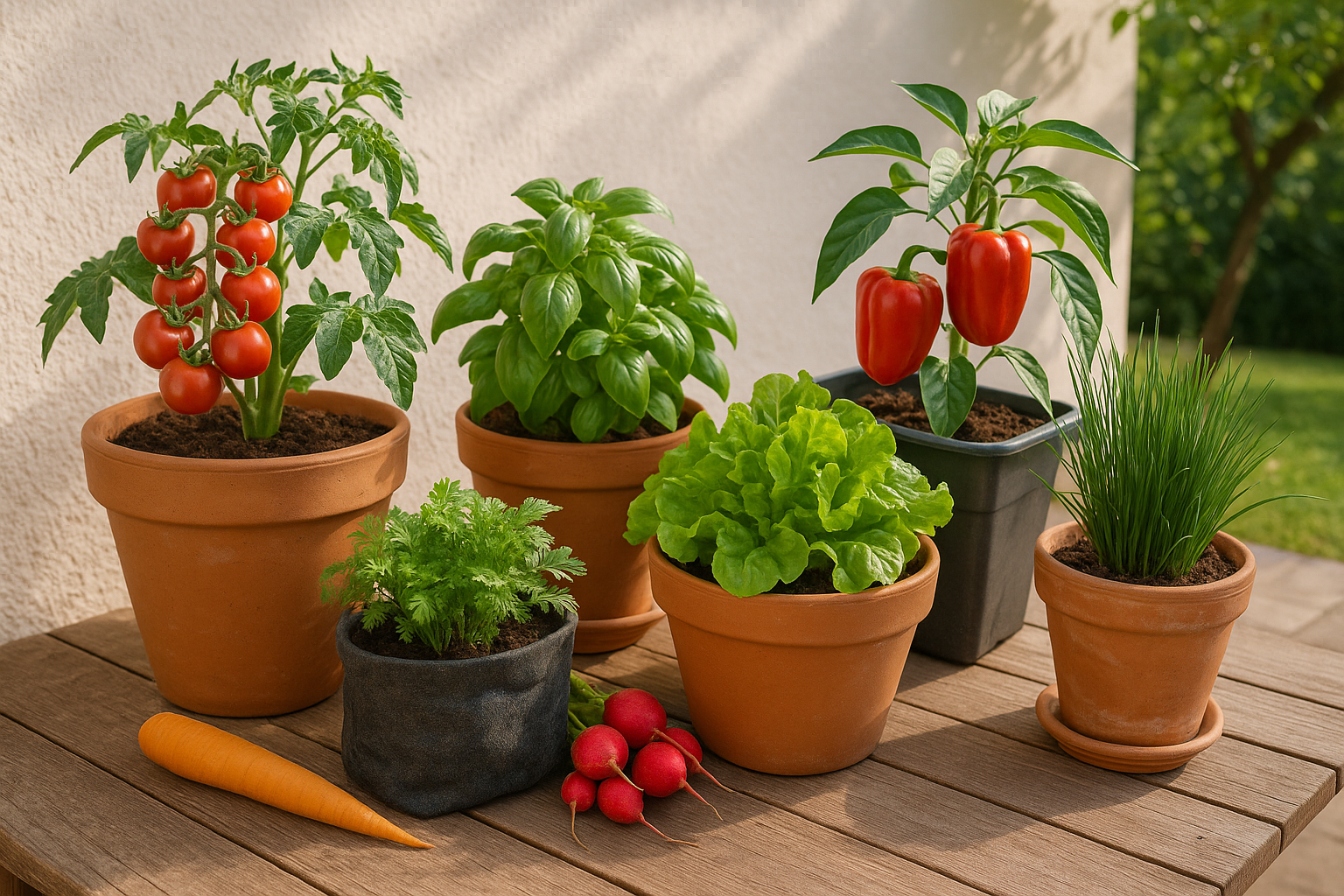Don’t have a big backyard? No problem! Growing vegetables in pots is a perfect solution for balconies, patios, or even sunny windowsills. With the right containers, soil, and care, you can grow a productive edible garden in even the smallest spaces. This guide will show you how.
Why Grow Vegetables in Pots?
- Space-saving: Great for apartments and small homes
- Mobility: Move pots for sun, shade, or protection from weather
- Soil control: Avoids poor native soil and compaction
- Pest and disease management: Easier to isolate and treat
- Beginner-friendly: Low-cost and simple setup
Container gardening makes growing your own food accessible and fun.
Best Vegetables to Grow in Pots
Choose compact, quick-growing, and productive plants:
- Lettuce and leafy greens
- Spinach and kale
- Radishes
- Cherry tomatoes
- Peppers (bell, chili, jalapeño)
- Bush beans
- Carrots (choose short varieties)
- Herbs like basil, parsley, chives, mint
Start with what you enjoy eating and cooking with!
Choosing the Right Pots
- Size: Bigger is better for root space and moisture retention
- Depth: At least 8–12 inches deep for most vegetables
- Material: Plastic (lightweight), terracotta (aesthetic), or fabric grow bags (flexible)
- Drainage holes: Essential to prevent root rot
Tip: Use pot saucers or trays to catch excess water indoors or on balconies.
Selecting the Right Soil
- Use high-quality potting mix—never garden soil
- Mix in compost for nutrients and water retention
- Add perlite or coconut coir to improve aeration
- Consider slow-release fertilizer or organic feeding monthly
Good soil = good harvest.
Planting and Spacing Tips
- Follow seed packet or label instructions for depth and spacing
- Don’t overcrowd—leave room for air and root growth
- Plant taller veggies like tomatoes in center or back of pots
- Interplant herbs or flowers to deter pests and maximize use
Group compatible plants together if using large containers.
Watering Wisely
- Check moisture daily—soil in pots dries out faster
- Water until it drains from the bottom
- Water early in the morning for best absorption
- Use self-watering containers or watering spikes to simplify care
- Mulch the soil surface to retain moisture and reduce temperature swings
Container plants are more sensitive to drying out.
Sunlight and Positioning
Most vegetables need 6–8 hours of sunlight daily. Position your pots:
- On a south-facing balcony or windowsill
- Use rolling carts to follow the sun
- Hang planters from railings or mount shelves on walls
- Use grow lights if indoors with limited sun
Rotate pots every few days to promote even growth.
Dealing with Pests and Problems
- Check leaves weekly for aphids, mites, or discoloration
- Use natural sprays like neem oil or soapy water
- Keep pots elevated for airflow and to avoid ground pests
- Trim yellowing leaves and spent flowers
- Monitor for overwatering—especially in rainy weather
Stay vigilant, and act early.
Harvesting and Replanting
- Harvest regularly to encourage new growth
- Lettuce and spinach can be cut-and-come-again
- Re-seed carrots, radishes, or herbs for continuous yield
- Clean and refresh soil between growing cycles
- Compost old plant matter and add fresh compost before replanting
You can grow year-round with a little planning.
Final Thoughts: Garden Anywhere
Growing vegetables in pots lets you garden no matter where you live. With a few containers, some good soil, and regular care, you can enjoy fresh food right from your doorstep. It’s satisfying, sustainable, and simpler than you think.

